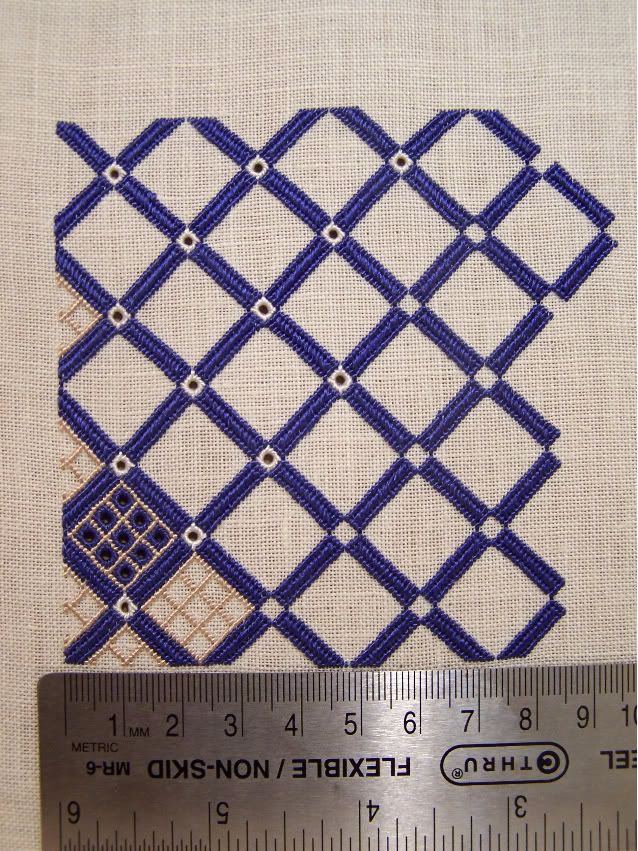

My exploration (and attempts at reconstruction) of Early- through Late-Medieval purses, pouches, and bags with a focus on embroidery and other methods of surface decoration.
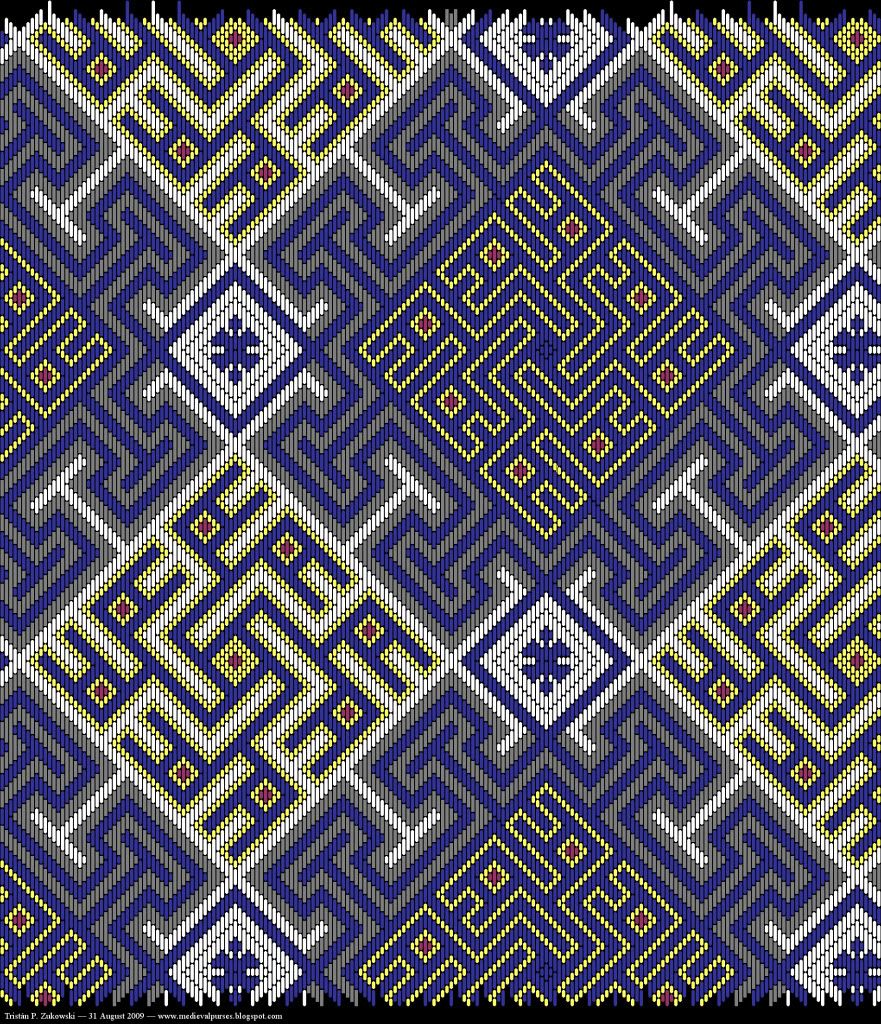
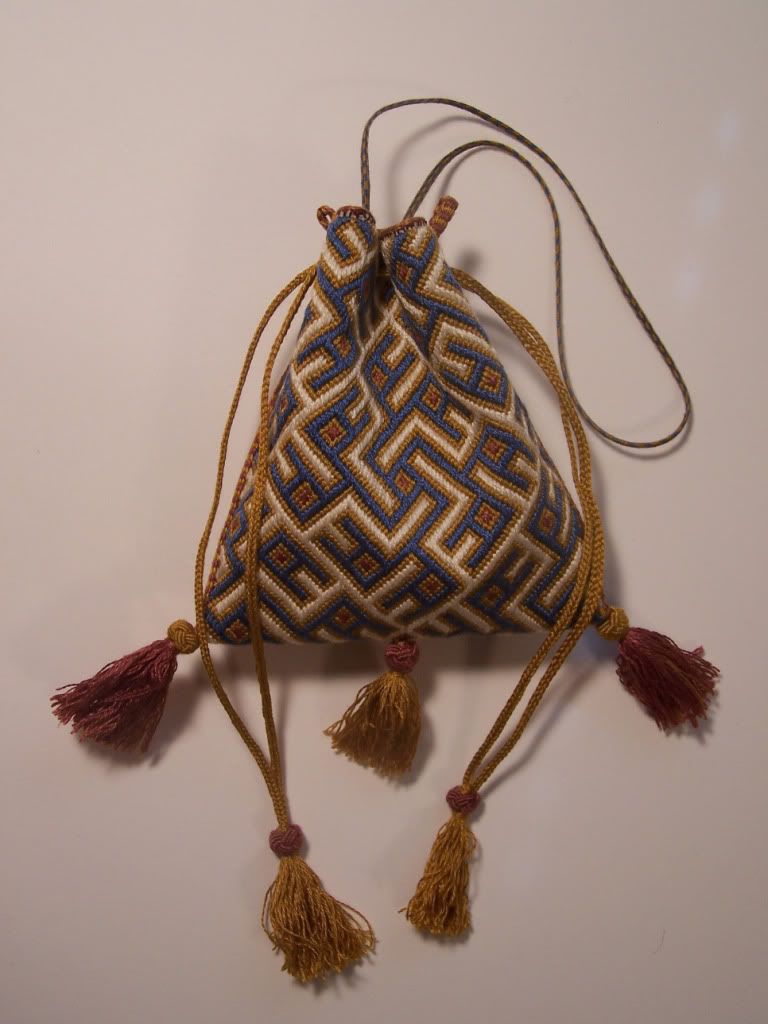 Based on a late 13th century Spanish reliquary purse; KIK/IRPA object no. 43380. I designed the pattern myself, based on the portion of the extant piece that was generally intact and unobscured. See Medieval Arts & Crafts for a slightly different interpretation. I am currently working on drafting the rest of the pattern, after lots of squinting at those archival photos and a healthy dose of guesswork. I'll post that pattern soon.
Based on a late 13th century Spanish reliquary purse; KIK/IRPA object no. 43380. I designed the pattern myself, based on the portion of the extant piece that was generally intact and unobscured. See Medieval Arts & Crafts for a slightly different interpretation. I am currently working on drafting the rest of the pattern, after lots of squinting at those archival photos and a healthy dose of guesswork. I'll post that pattern soon.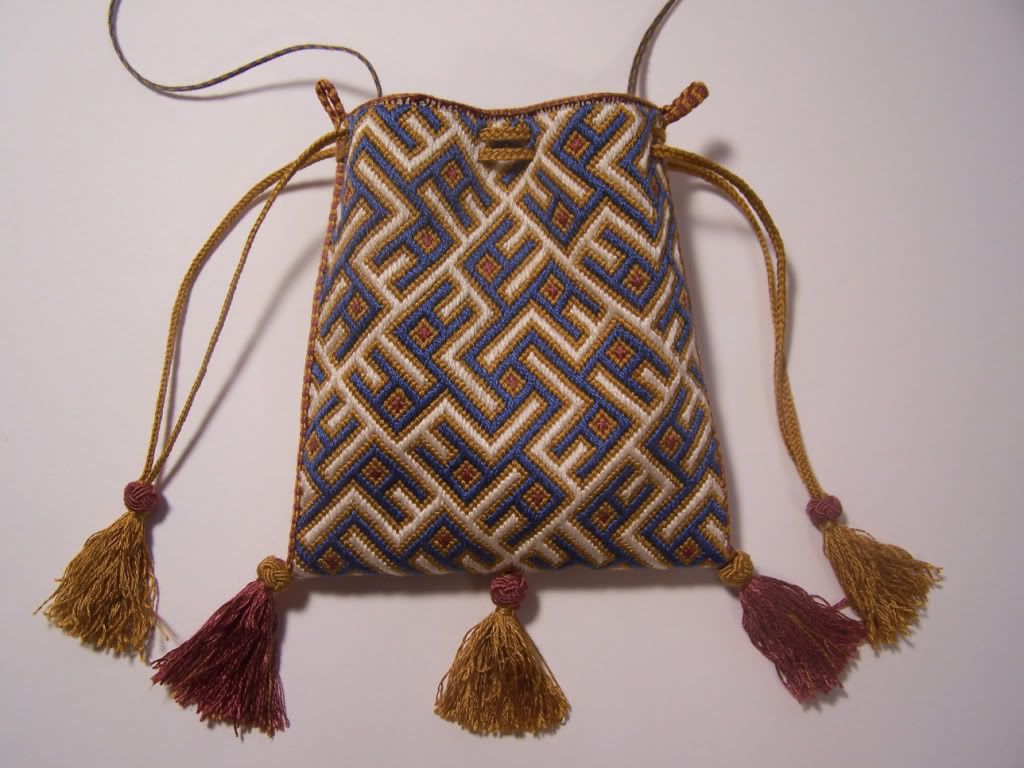
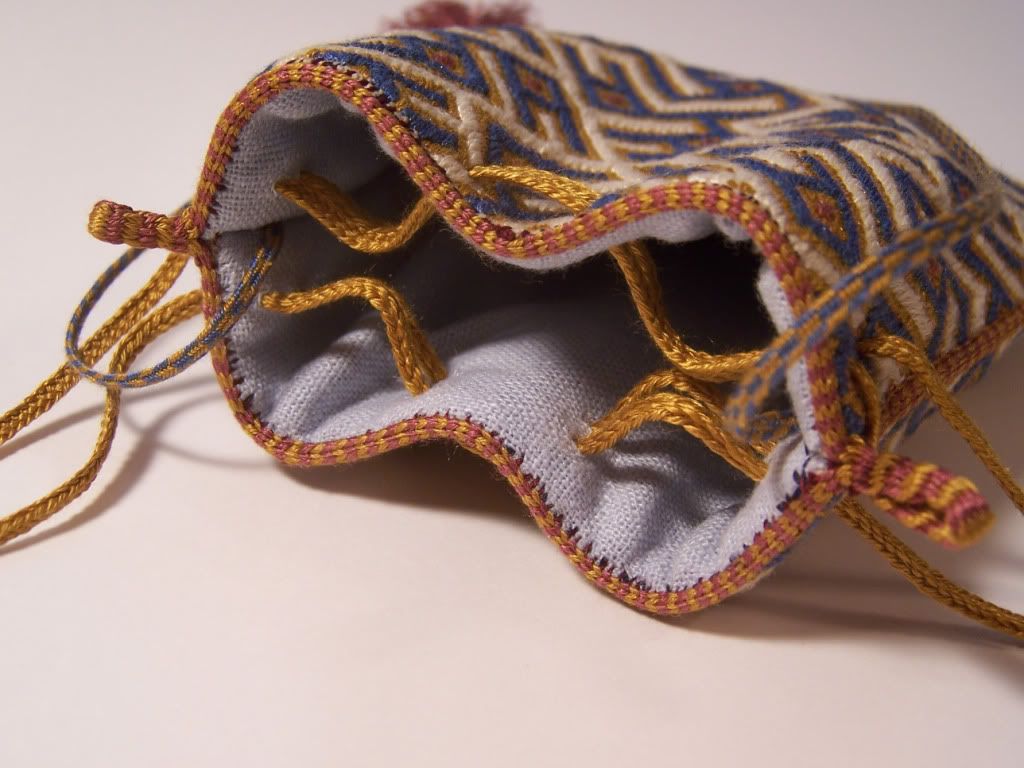
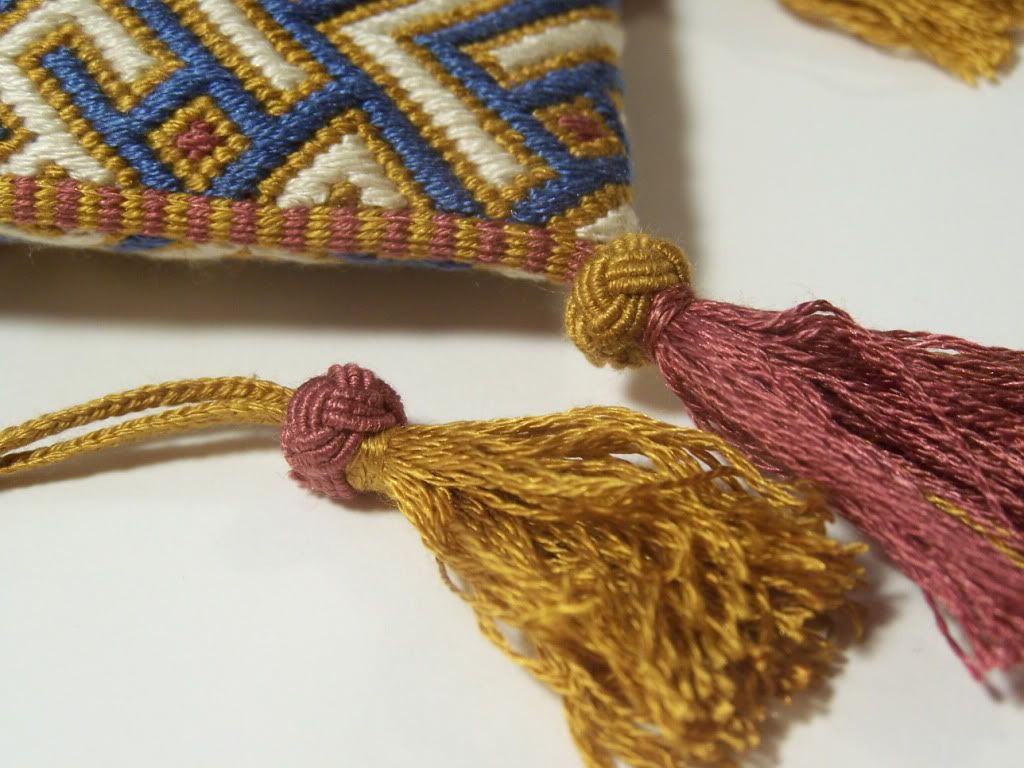

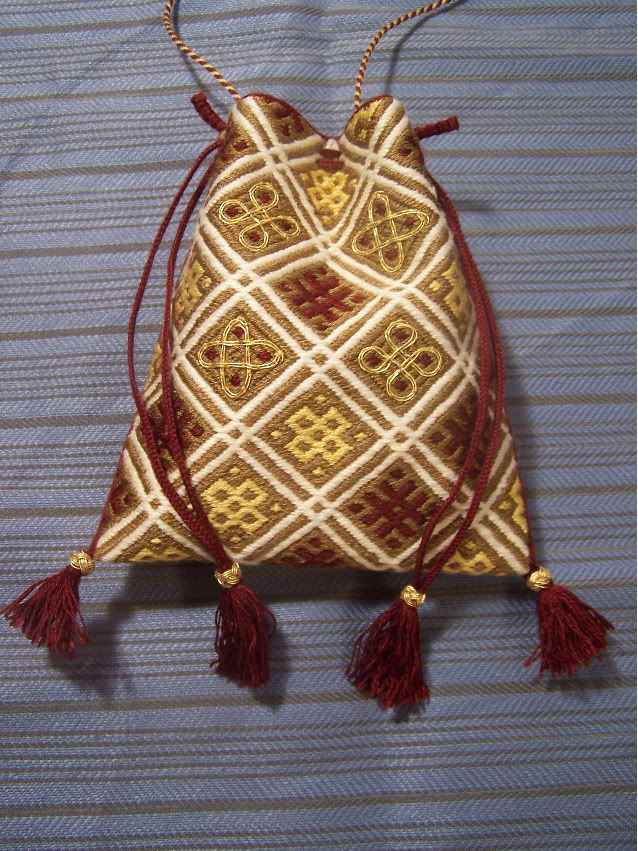 Based on the 14th century bag in the V&A Museum's collection, object 8313-1863
Based on the 14th century bag in the V&A Museum's collection, object 8313-1863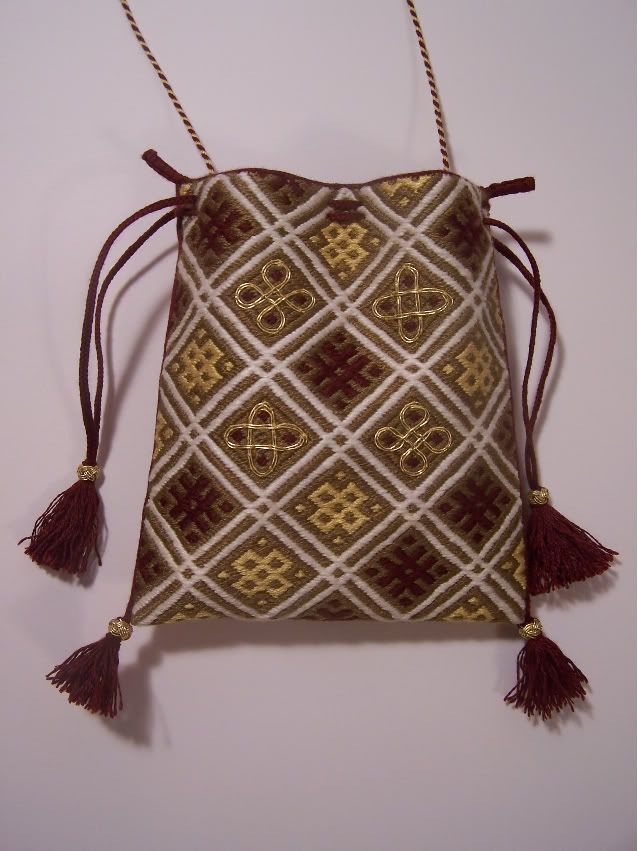
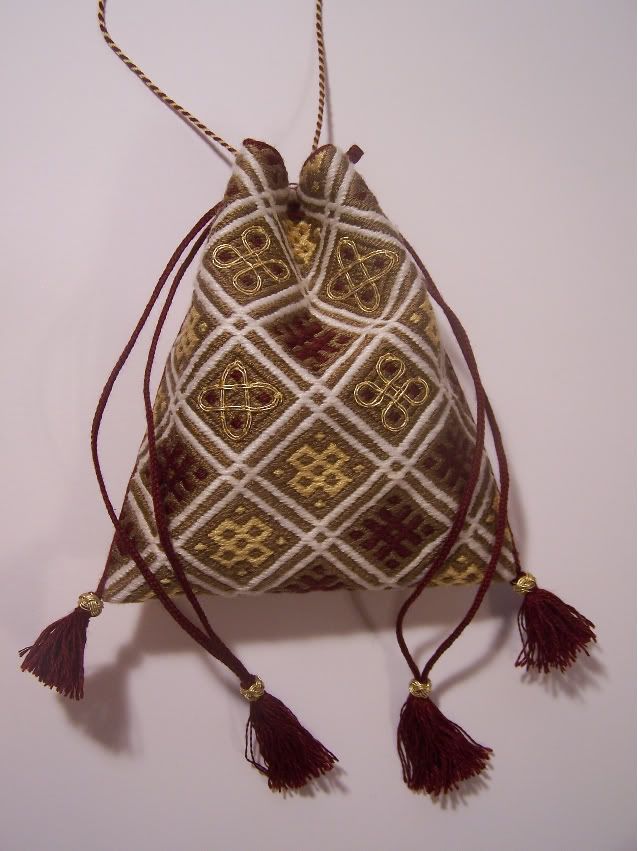
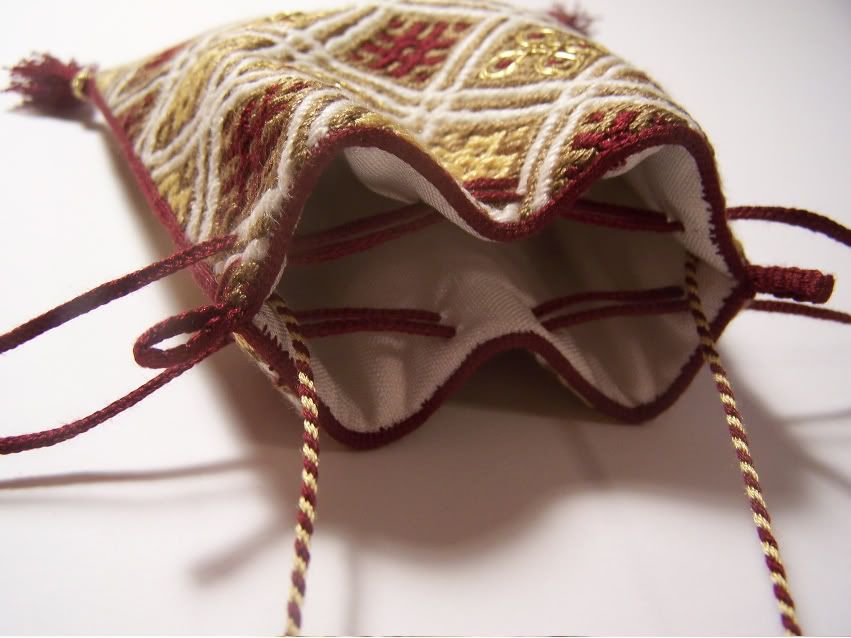
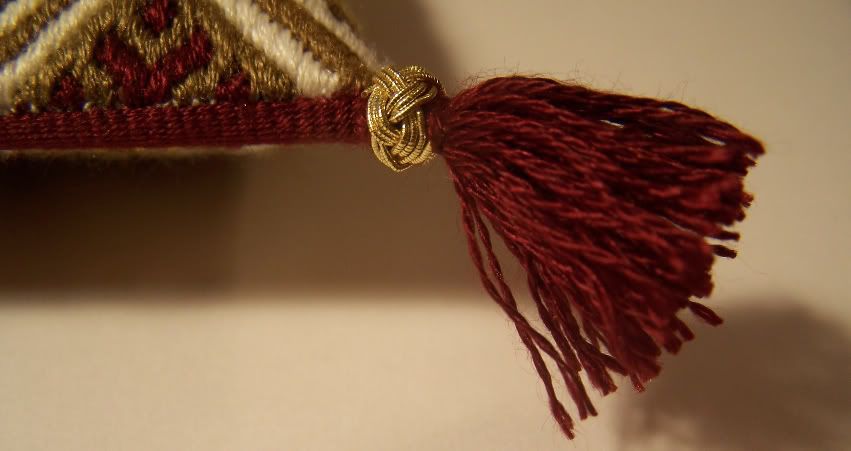
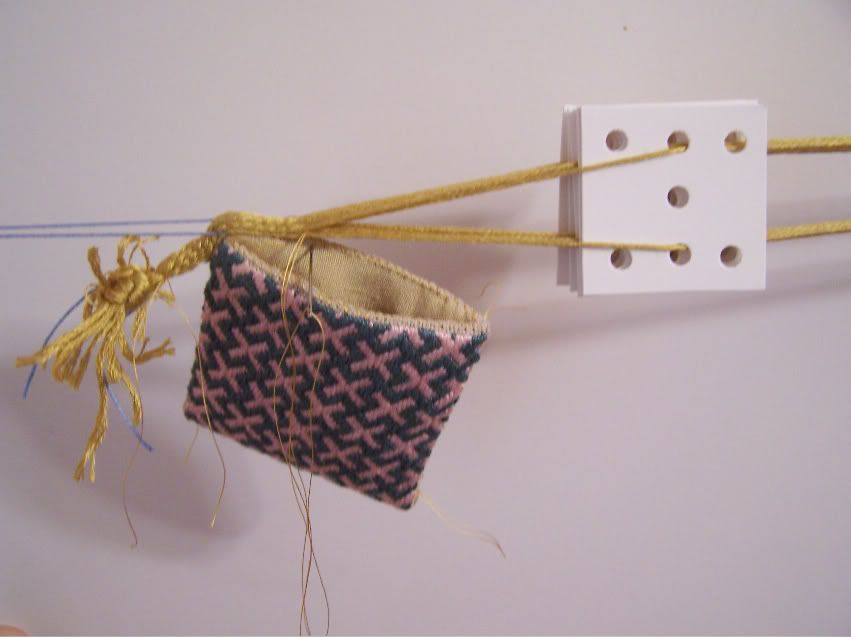

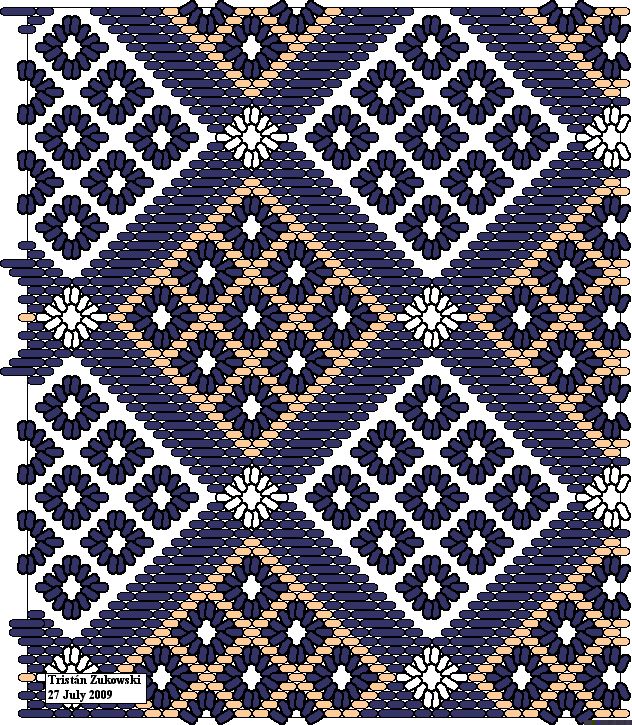 I've been intrigued by the late 13th c. reliquary bag IRPA obj. 21717 for some time now; between yesterday night and this morning I had nothing better to do, so I came up with a possible interpretation of the pattern, and also a small sample (below). What's interesting about this is that it seems to mix brick stitch (with which I've become quite familiar by now) and a kind of lattice motif made by — I assume — using an awl to spread apart the threads and stitching it open, essentially like a lacing hole on a garment. It also has portions where the ground fabric is visible. Unfortunately, I can't determine whether this was intentional or not; I suppose the stitching could have been destroyed by caustic dyes, or picked out (for example, to recycle gold thread). I've just gone with the notion that it was intended that way, and built my pattern to match that idea.
I've been intrigued by the late 13th c. reliquary bag IRPA obj. 21717 for some time now; between yesterday night and this morning I had nothing better to do, so I came up with a possible interpretation of the pattern, and also a small sample (below). What's interesting about this is that it seems to mix brick stitch (with which I've become quite familiar by now) and a kind of lattice motif made by — I assume — using an awl to spread apart the threads and stitching it open, essentially like a lacing hole on a garment. It also has portions where the ground fabric is visible. Unfortunately, I can't determine whether this was intentional or not; I suppose the stitching could have been destroyed by caustic dyes, or picked out (for example, to recycle gold thread). I've just gone with the notion that it was intended that way, and built my pattern to match that idea.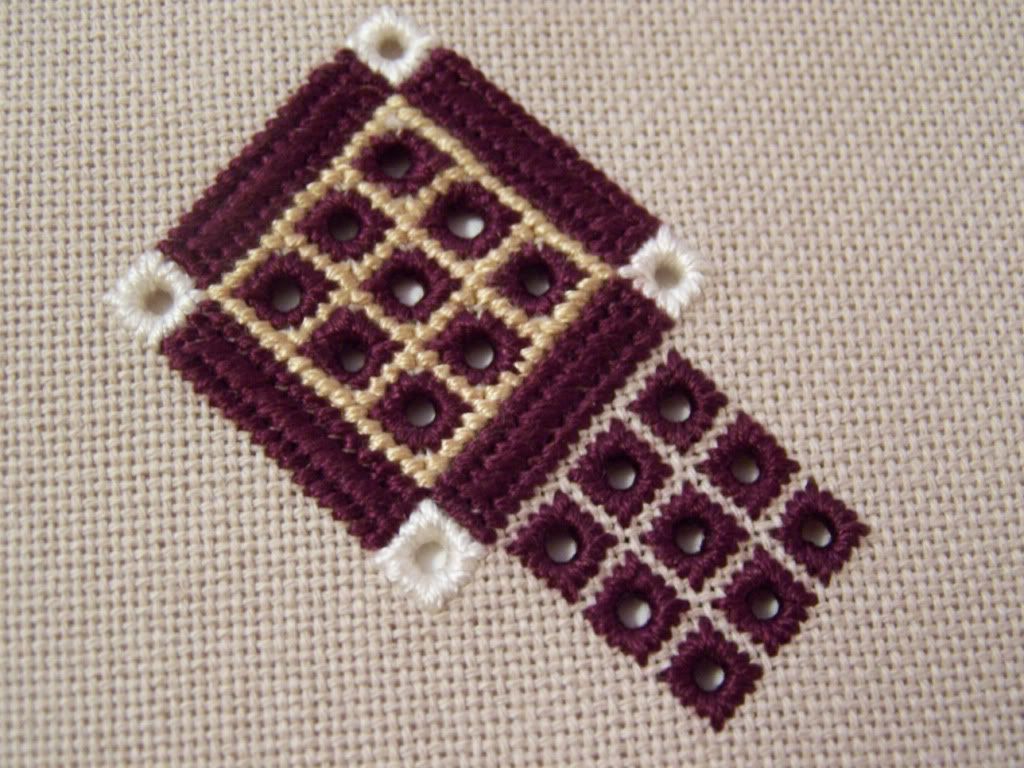 You may notice that the yellow-bordered latticework doesn't have vertical stitches. I hadn't originally put them into the pattern, but by the time I got to the white portions and the unbordered latticework (where the ground fabric can be seen) I decided that it did need those stitches on the top and bottom, otherwise it would look strange.
You may notice that the yellow-bordered latticework doesn't have vertical stitches. I hadn't originally put them into the pattern, but by the time I got to the white portions and the unbordered latticework (where the ground fabric can be seen) I decided that it did need those stitches on the top and bottom, otherwise it would look strange.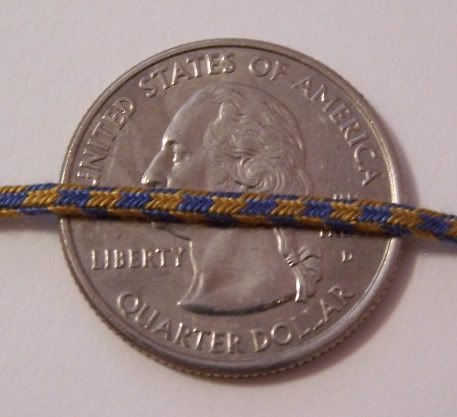


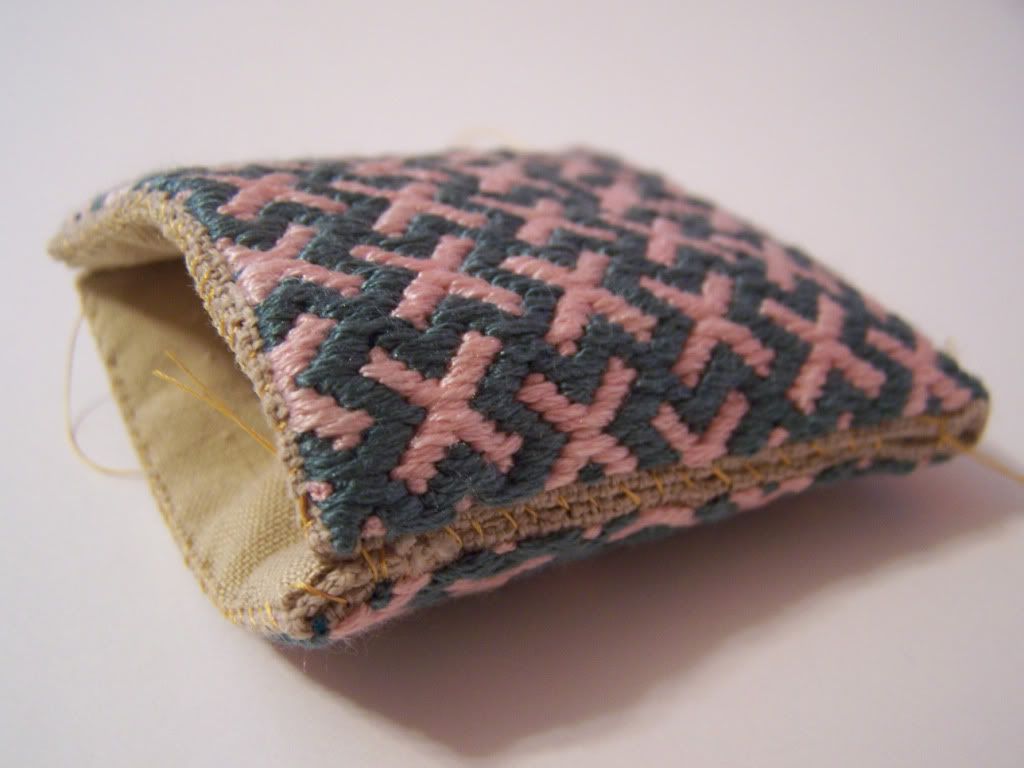
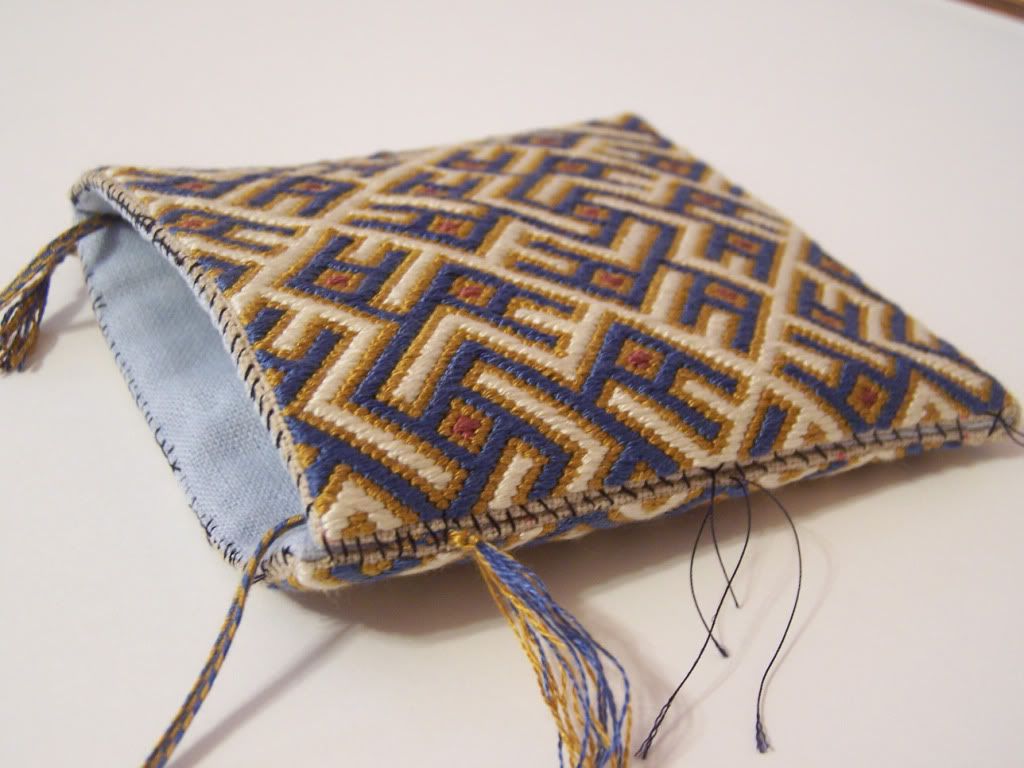
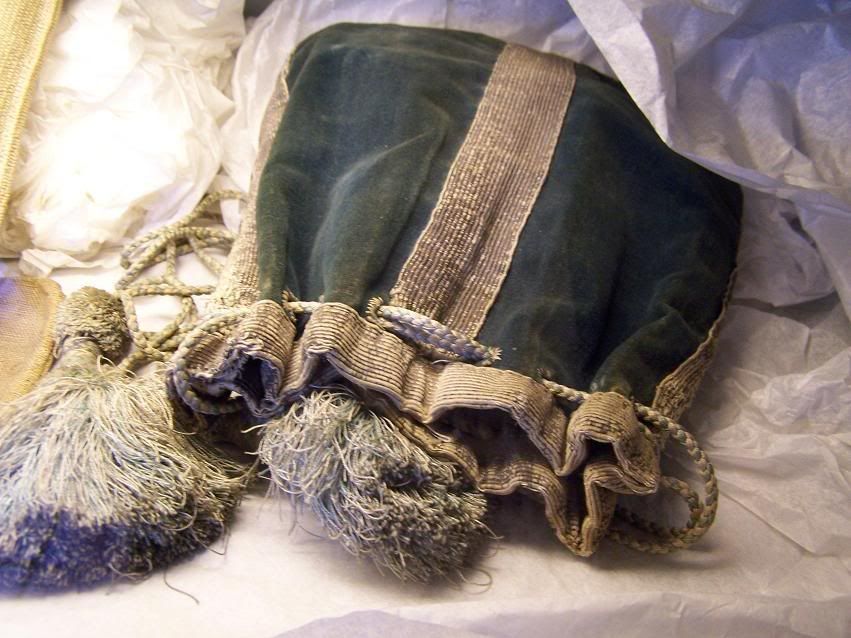


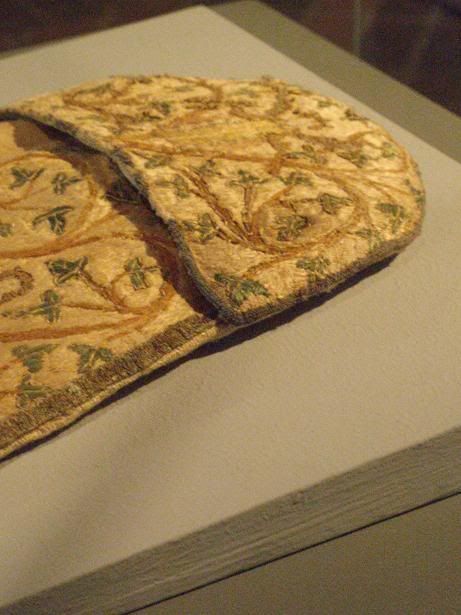
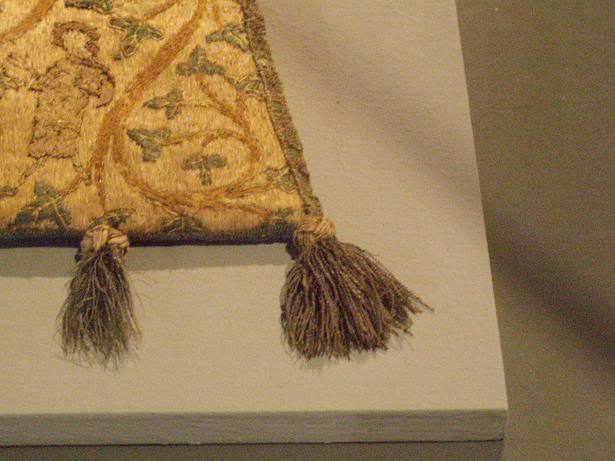
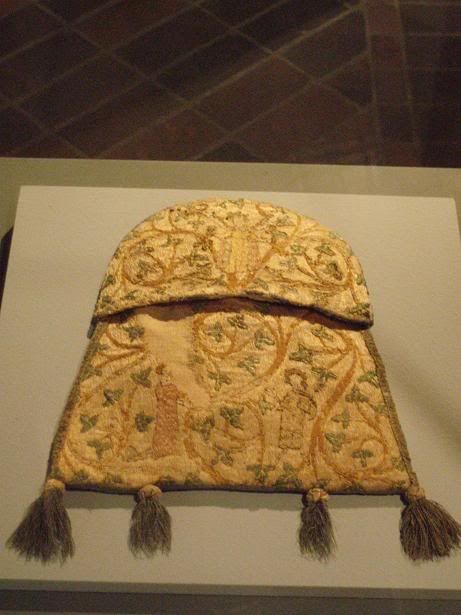

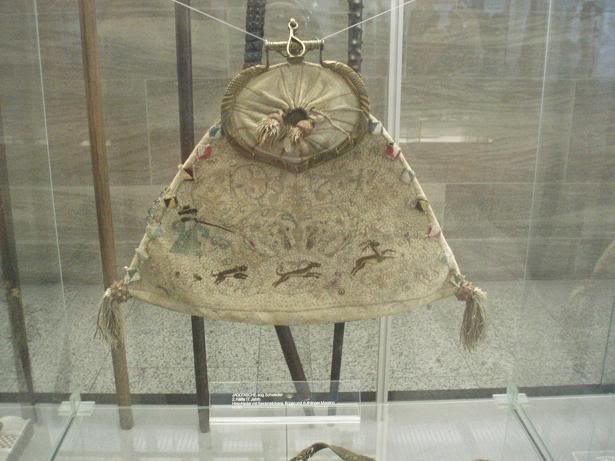
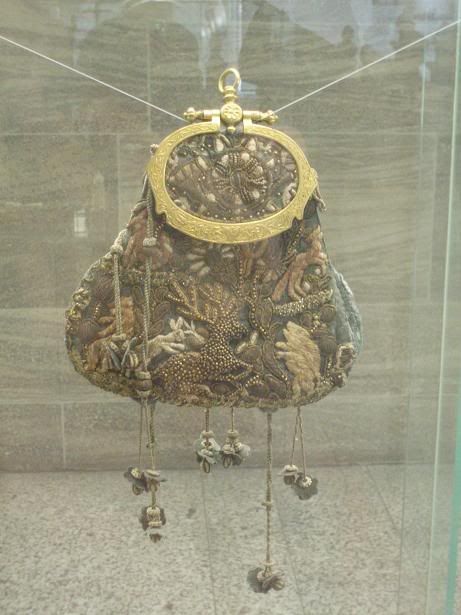
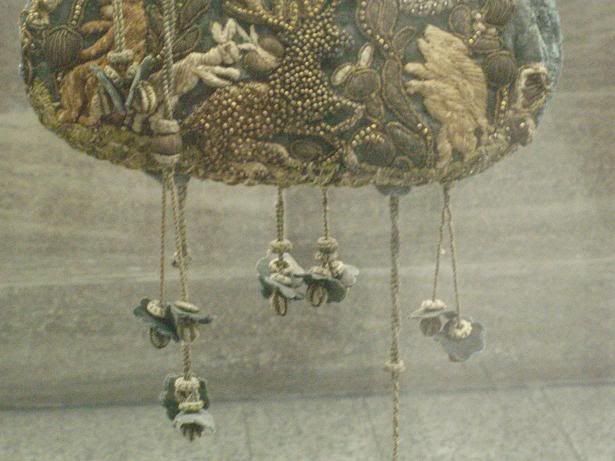
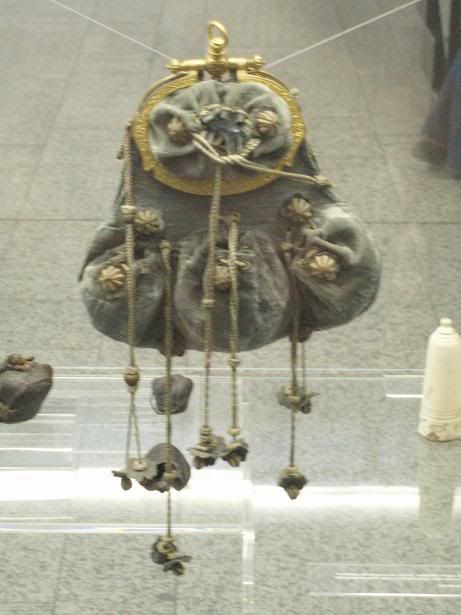
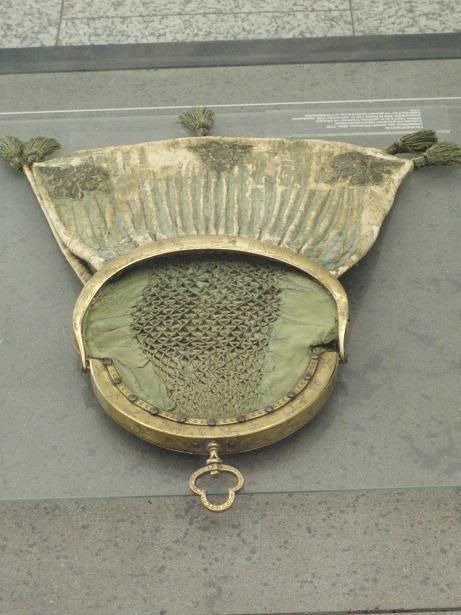
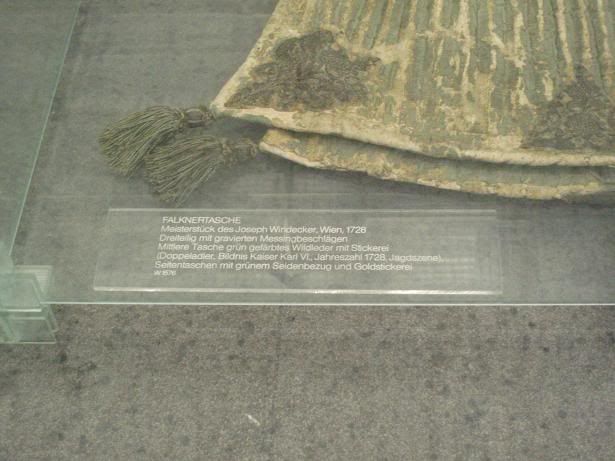
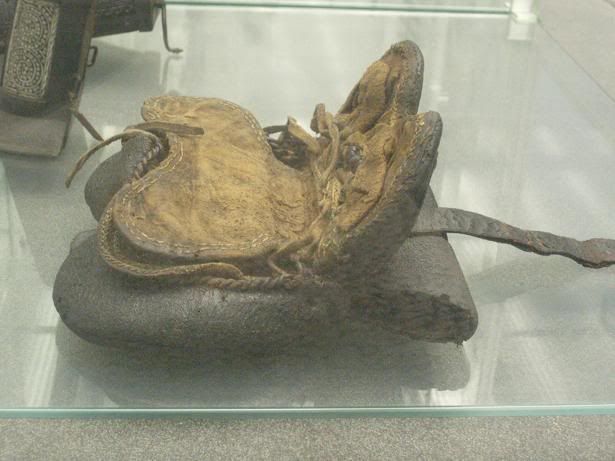
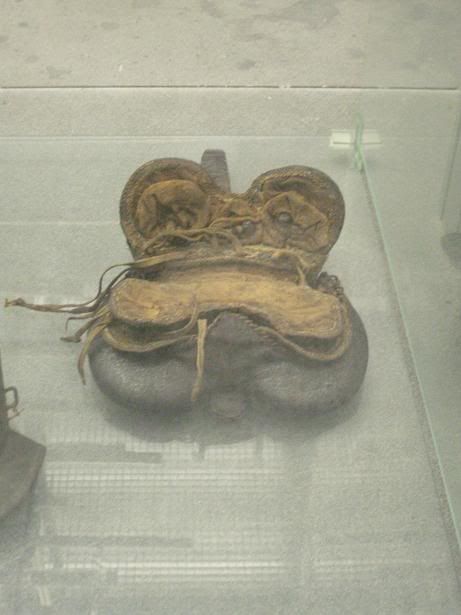







 First things first.. more fingerloops. From left to right we have: A Lace Dawns (#13); A Lace Bend Broad (#24), strange but interesting; A Grene Dorge (#38), which is the first fingerloop pattern I ever learned, taught by Lois Swales herself (a researcher of such things whom I know from Ithaca); and A Broad Lace Party (#23), which I really like but holy hell is it time-consuming.
First things first.. more fingerloops. From left to right we have: A Lace Dawns (#13); A Lace Bend Broad (#24), strange but interesting; A Grene Dorge (#38), which is the first fingerloop pattern I ever learned, taught by Lois Swales herself (a researcher of such things whom I know from Ithaca); and A Broad Lace Party (#23), which I really like but holy hell is it time-consuming.
